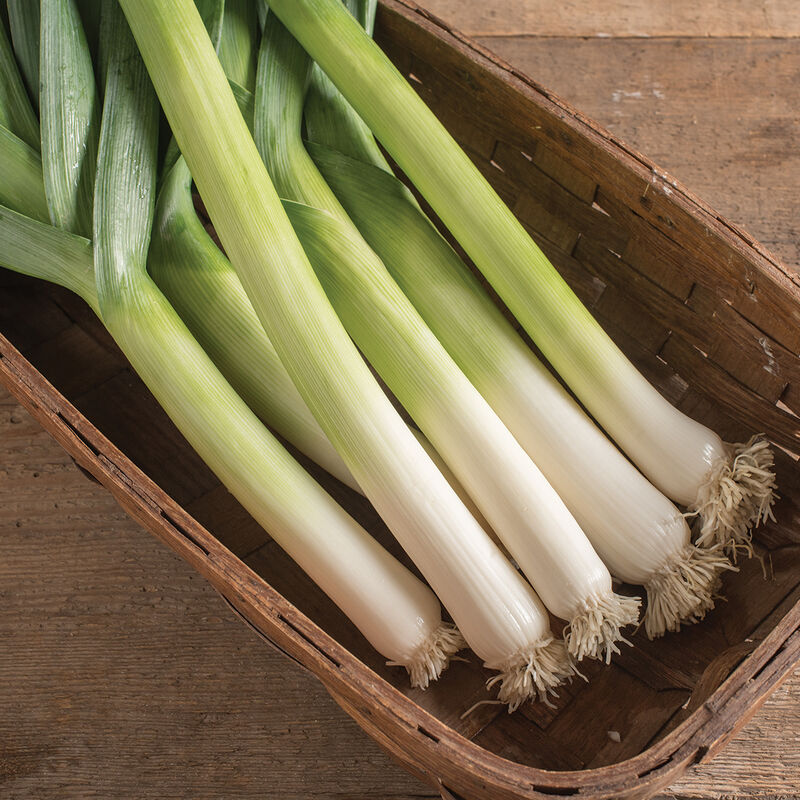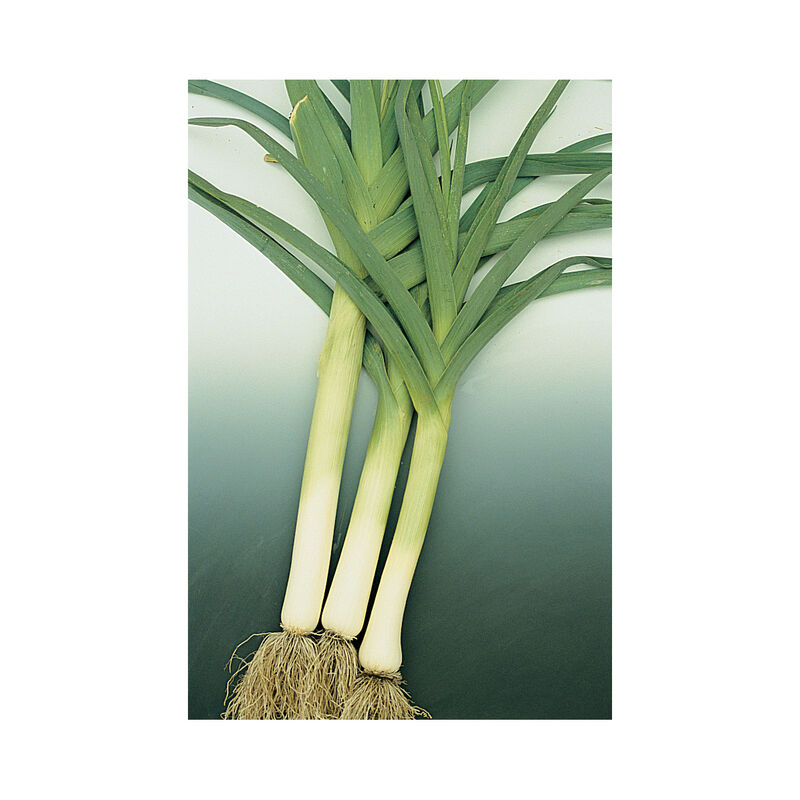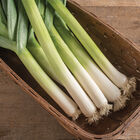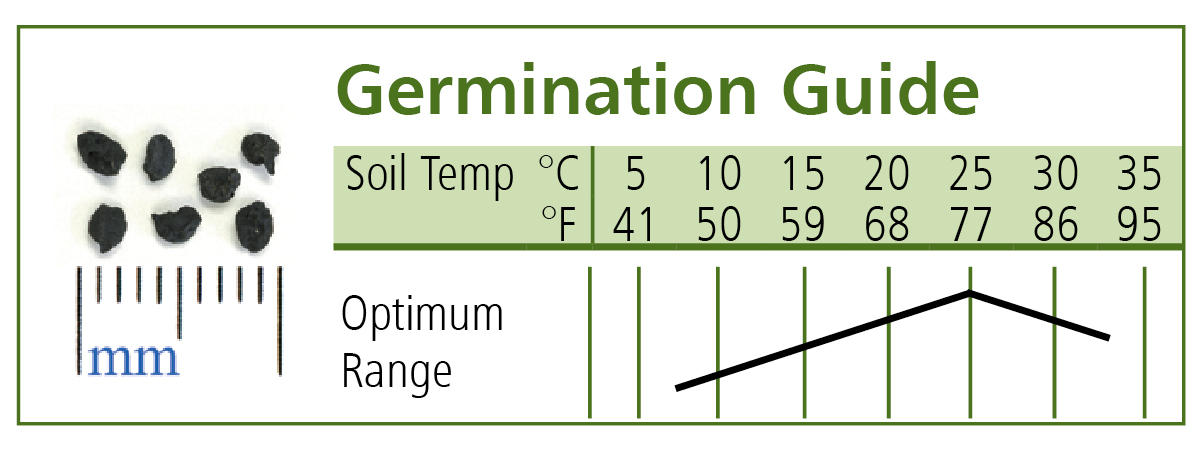King Richard Leek Plants
King Richard Leek Plants
Exclusive! Remarkable earliness and size.
Offered in single-variety bunches (units) averaging 50 plants each. 30-unit orders must consist of one variety. No mixing and matching. Beautiful full-sized leeks. In favorable soil and culture, the white shanks are over a foot long to the first leaf. Medium-green leaves with full habit. For baby leeks, plant closely (40 seeds/ft.) and harvest at finger size. While not hardy enough for overwintering, they will withstand medium-heavy frost (32° to 20°F/0° to -7°C) without losing their healthy appearance. Leeks are easy to grow from these field-grown, spring-dug plants. When the plants arrive as dormant starts, just separate them and transplant out. Also available in organic seed.
- This product does not ship to Canada.
- This product does not ship to the following countries: United Arab Emirates, Austria, Australia, Barbados, Belgium, Bulgaria, Bermuda, Bahamas, Switzerland, Cyprus, Czech Republic, Germany, Denmark, Estonia, Spain, Finland, France, United Kingdom, Greece, Hong Kong, Croatia, Hungary, Ireland, Iceland, Italy, Japan, Republic of Korea, Kuwait, Cayman Islands, Lithuania, Luxembourg, Latvia, Malta, Netherlands, Norway, New Zealand, Poland, Portugal, Qatar, Romania, Sweden, Singapore, Slovenia, Slovakia, San Marino, Thailand, Trinidad and Tobago, Taiwan.
- This product does not ship to the following states and jurisdictions: AA, AE, AP, AS, FM, GU, ID, MH, MP, OR, PR, PW, VI.
Onion and Leek plants ship weekly from mid January through the end of April. Add item to cart and enter your shipping zip code to select from a list of available ship dates for your plant hardiness zone. If you wish to choose a ship date earlier than the recommended dates you must place your order by phone (1-877-564-6697). Orders over 15 bunches/units NOT shipping to AK or HI require a physical address (no PO boxes). All orders to AK ship via USPS.
Orders shipping to Oregon cannot be processed online. Please call 1-877-564-6697 to place orders to Oregon, except those shipping to Malheur County; shipments to Malheur County, OR are prohibited.
SCIENTIFIC NAME:
Allium porrumCULTURE:
Leeks are heavy feeders and require fertile soil (pH of 6.2-6.8) for best results.DAYS TO MATURITY:
From transplanting; add 20-30 days if direct seeding.TRANSPLANTING:
Sow in flats 10-12 weeks before last frost at 1/4" apart, 1/4" deep or start in plug flats, thinning to one plant per cell. Beginning in late spring, when approx. 8" tall and pencil-thick, transplant 6" apart in rows at least 12" apart in holes dibbled 6" deep. Only 2-3" of leaves need to extend above the soil surface. Do not firm soil - allow irrigation or rain to fill in the dibble hole.DIRECT SEEDING:
Sow in early spring, 6 seeds/ft., 1/4- 1/2" deep, in rows 24" apart. Thin to 6".AVG. DIRECT SEEDING RATE:
1,000 seeds/165', 1 oz./1,650', 11 oz. or 105M/acre at 6 seeds/ft. in rows 30" apart.BLANCHING:
During the growing period hill the plants with soil 2 or 3 times, higher with each hilling. This forces the leaves higher up the plant resulting in extra-long blanched stalks and a much longer edible portion. When using the "dibble method," hilling is reduced or eliminated.DISEASE:
All Johnny's leek plants are tested and certified free from the presence of white rot and parasitic nematodes.HARVEST:
When plants reach desired size, loosen with a spading fork and lift plant.STORAGE:
Clean leeks and store several weeks at near freezing in a humid cooler in boxes, or store in a root cellar with roots in moist soil/sand/peat mix.TRANSPLANTS:
Avg. 1 oz./6,000 plants, 1 lb./96,000.SEEDS/OZ.:
7,700-10,700 (avg. 9,400).PACKET:
250 seeds, sows 38-40' or 140 transplants unless otherwise noted.Johnny's is committed to your success, every step of the way.
We want you, our customer, to be 100% satisfied with all of our seeds, tools, and supplies.
If anything you purchase from us proves unsatisfactory, we will either replace the item or refund the purchase price.






